This article is about CI/CD, what it is, its benefits, and how to use AWS’s code pipeline to automate the process of code compiling and deployment.
What is CICD.
Continuous Integration/Continuous Deployment is shortened to as CI/CD. This methodical approach more fully guarantees the quality of the code, optimises development processes, and expedites the release of software upgrades. For a DevOps team, it’s among the best practises.

What do CI/CD Pipelines do?
A CI/CD pipeline automates the code integration and delivery process. It builds the code, runs automation tests, and deploys a new software version. As soon as a developer merges code into the code repository, the CI/CD pipeline is activated. It compiles and deploys the build with the latest code. CI/CD pipelines help to eliminate manual errors, allows quick feedback to cross-functional teams, and can help in rapid product iterations.
What are the benefits of CI/CD Pipelines?
CI/CD pipeline brings a lot of benefits to businesses. Some of the benefits are:
- Obtain a competitive advantage in the market by releasing new products and features quickly
- Reduce the time-to-market for the product
- Allows you to collect customer feedback much faster
- Eliminates manual errors
- Reduces labour and costs
- Improves code quality
- The product is more reliable due to automation tests
- Allows developers to know what changes in the build can break the code and avoid them in the future
- Developers can focus on writing business requirements instead of worrying about the deployment and build issues
- QA, product teams, and other stakeholders have easy access to the latest version of the product
- Reverting back to a previous build in the event of a problem is a routine push-button action
- A fast feedback loop helps an organization bring a culture of learning and responsibility
Prerequisites for a demo using AWS CI/CD Code pipeline.
 GitHub Account
GitHub Account
 AWS Account
AWS Account
 Source Code
Source Code
Create a s3 bucket and allow Public Accsss to it.
- Step 1: Create an S3 bucket, allow public access to it, and enable static website hosting.

- Enabling public access

- Enabling Static website hosting and specify the name of default pages.
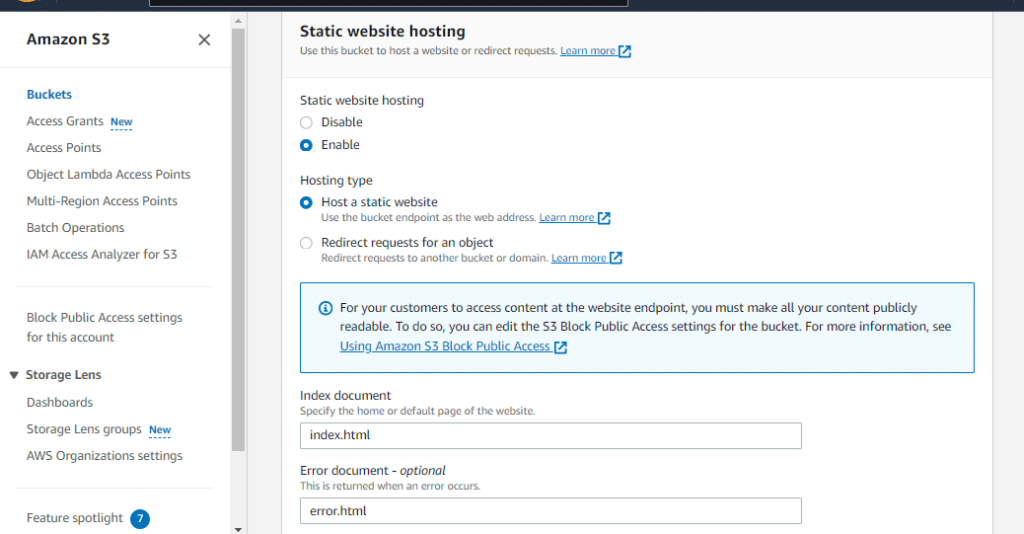
- Step 2: Go to the AWS console and create a new code pipeline as follows:
Enter the pipeline name and the role name. Click next to move to next screen.
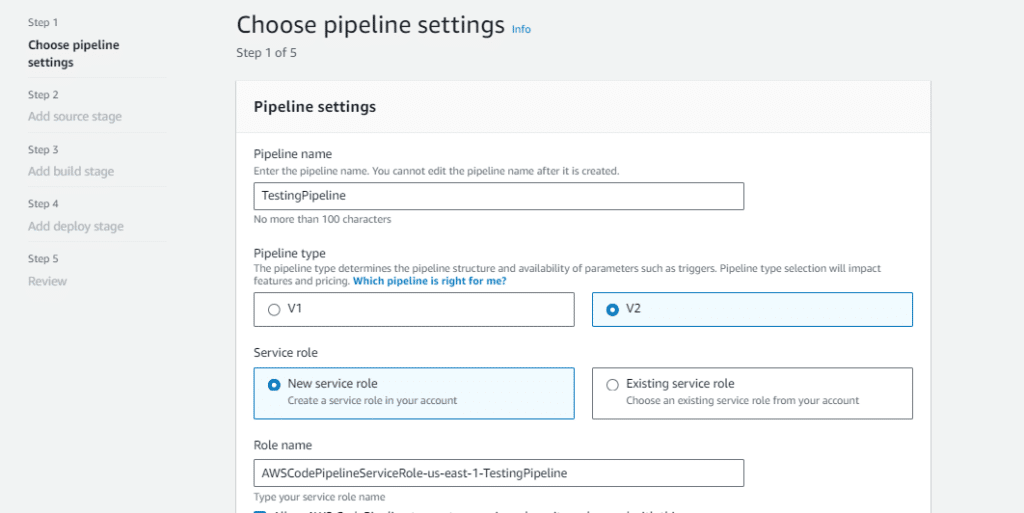
- Step 3: Link your GitHub repository with the code pipeline. Select the GitHub version 2 and click on the button “Connect to github”.
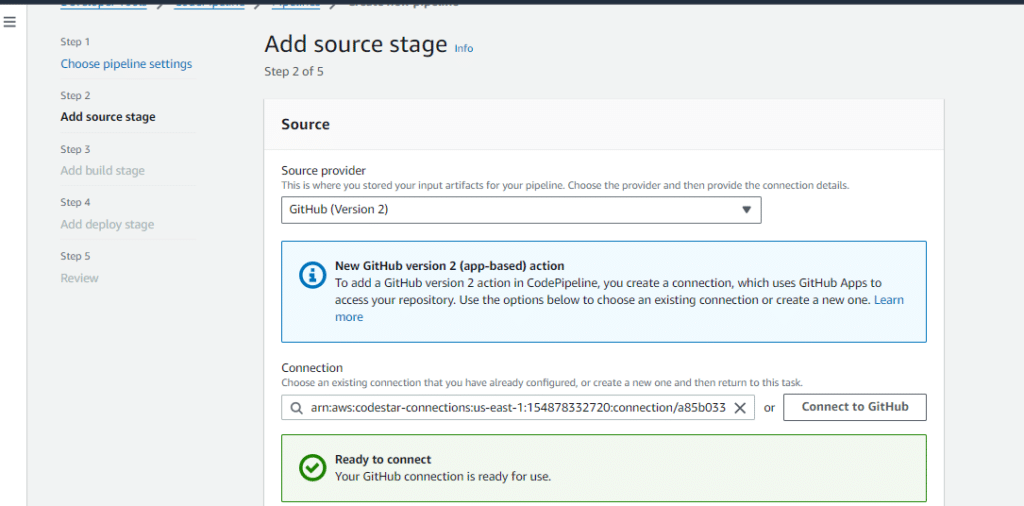
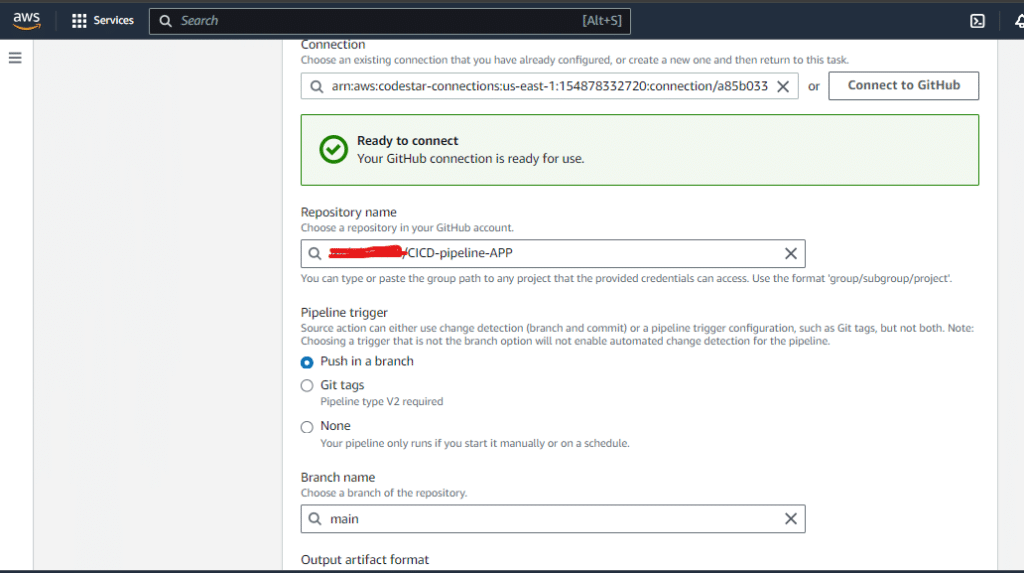
- Step 4: Choose “AWS Codebuild” as your build provider during the build stage. But you also have the option to use any other build provider. Next, select “Create Project” to start a fresh construction project. On this page, specify the operating system, runtime, service role, environment image, and image version.
Creating build Project

Adding build steps

Step 5: The deployment stage comes next. Since the build will be sent to an S3 bucket, you will list Amazon S3 as the deploy provider here. The S3 bucket will be your choice for build deployment. Since static web hosting is supported by S3 buckets, the build will be deployed there, and the project will be available via S3 URLs.
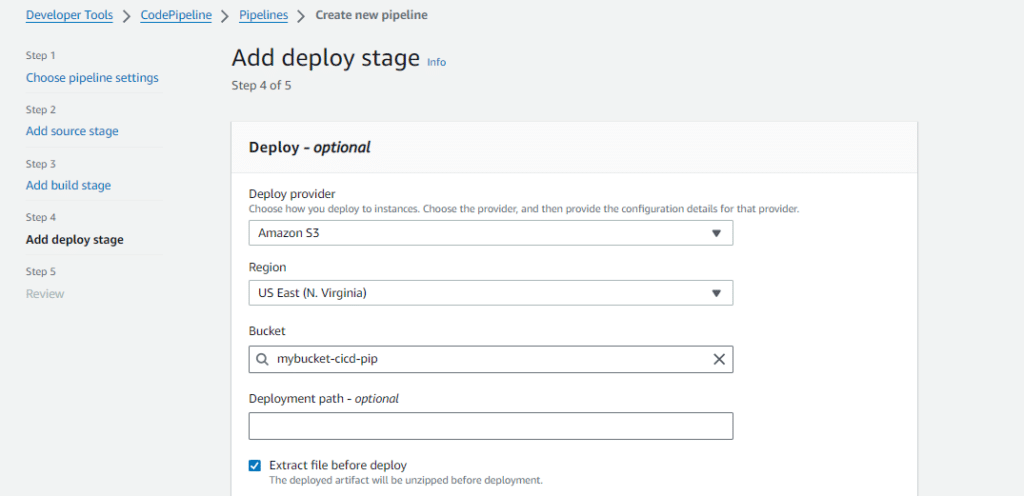
Step 6: Click “Next” And then click “Create pipeline”.

Hurray! our Pipeline is created.
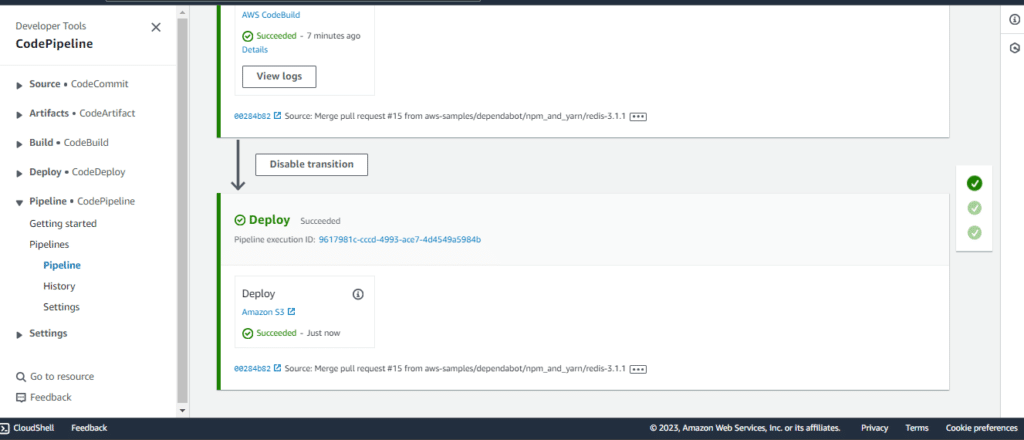
Step 8: Make any modifications in your code and push your code. As soon as you push your code, the pipeline will trigger and will deploy the latest build on S3, and if you refresh your browser, you will see the updated website.
Points to remember using CICD Pipeline
- Protect your CI/CD. Utilize SAST tools, keep track of logins, and check the code for vulnerabilities.
- Rather than building at each stage, you should just build once. Create once, deploy everywhere.
- Instead of testing after deployment, test the code early on.
- Fail quickly. Rollback code as soon as it breaks because of a code push and repair the problems right away.
- If you use code pipeline that uses an S3 bucket, then you must configure server-side encryption for that S3 bucket using AWS KMS keys.
Conclusion
- Implementing Continuous Integration/Continuous Deployment (CI/CD) pipelines, particularly using AWS Code Pipeline, is a crucial step towards achieving efficient and automated software development processes.
- The benefits of CI/CD, such as rapid product iterations, reduced time-to-market, and improved code quality, contribute significantly to a competitive advantage in the market.
- The demonstration provided outlines the necessary steps for setting up a CI/CD pipeline using AWS Codes Pipeline, from creating an S3 bucket to linking a GitHub repository, configuring build settings with AWS CodeBuild, and deploying the build to an S3 bucket.
- This streamlined process not only automates code integration and delivery, but also ensures quick feedback to cross-functional teams.
- Additionally, the points to remember emphasize the importance of protecting CI/CD environments with security measures, testing code early in the development process, and swiftly addressing issues through quick rollback procedures.
- The recommendation to configure server-side encryption for S3 buckets using AWS KMS keys underscores the commitment to security in the CI/CD pipeline.
- In essence, embracing CI/CD methodologies with AWS CodePipeline not only accelerates software development but also enhances code reliability, reduces manual errors, and fosters a culture of learning and responsibility within an organization
 GitHub Account
GitHub Account